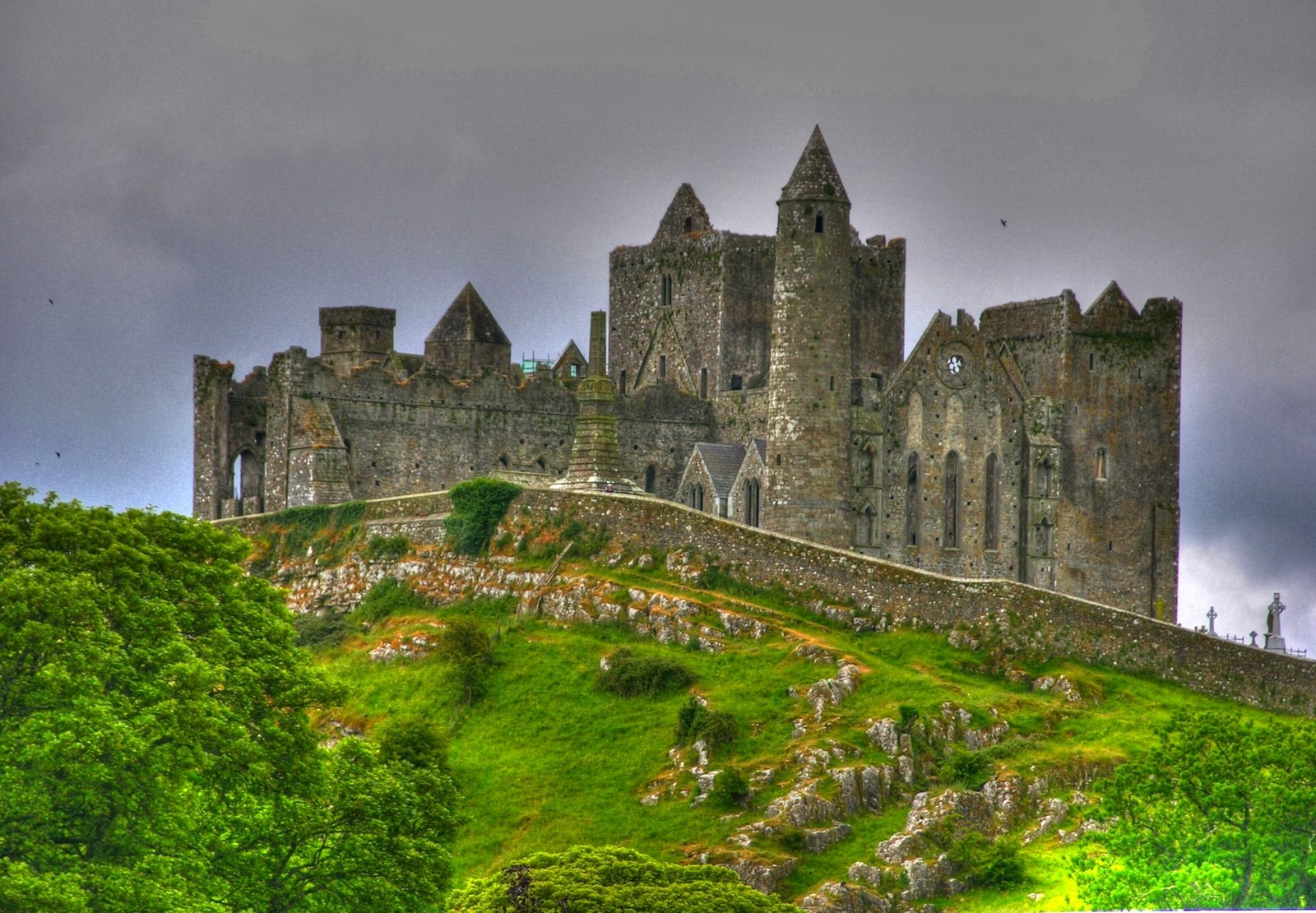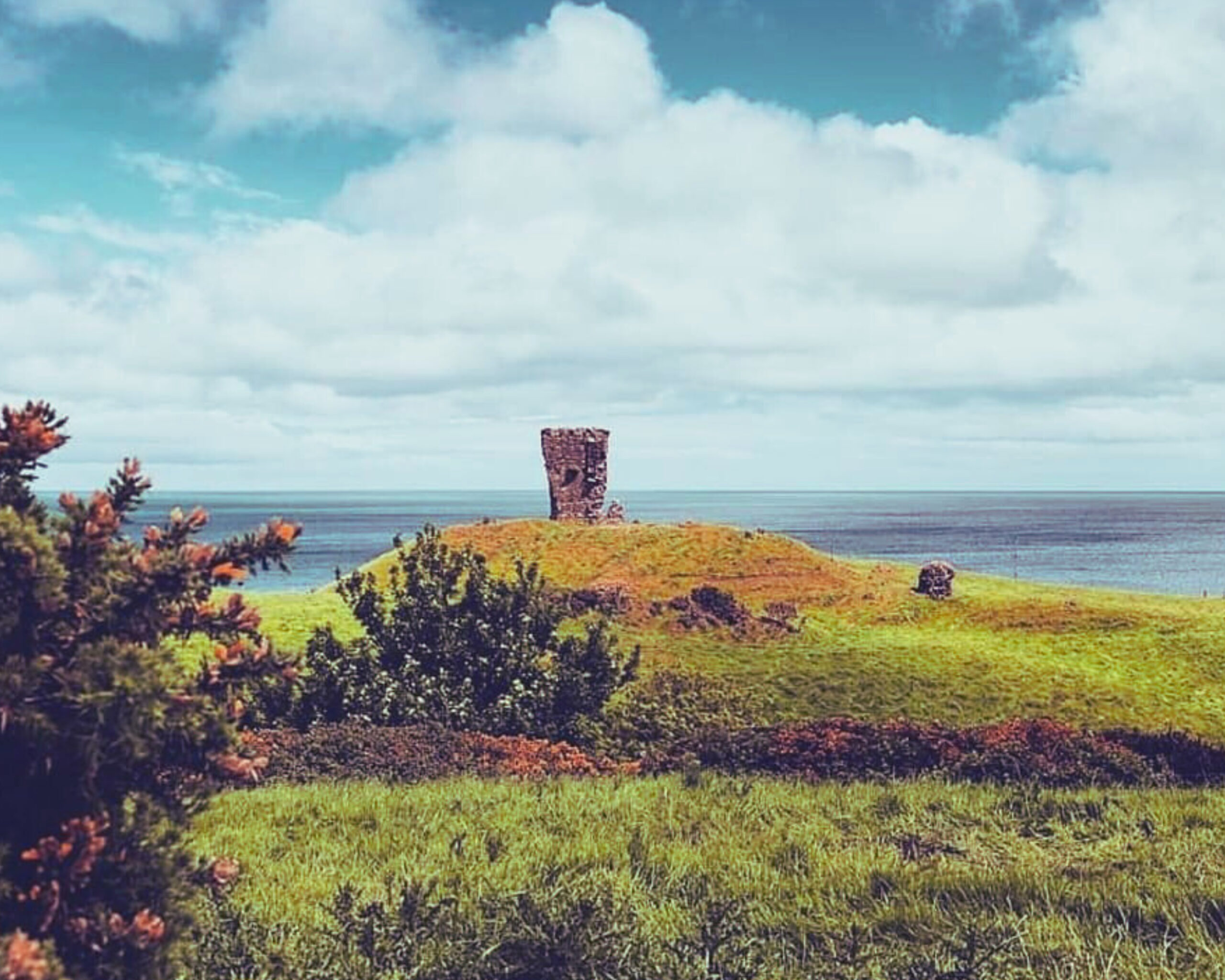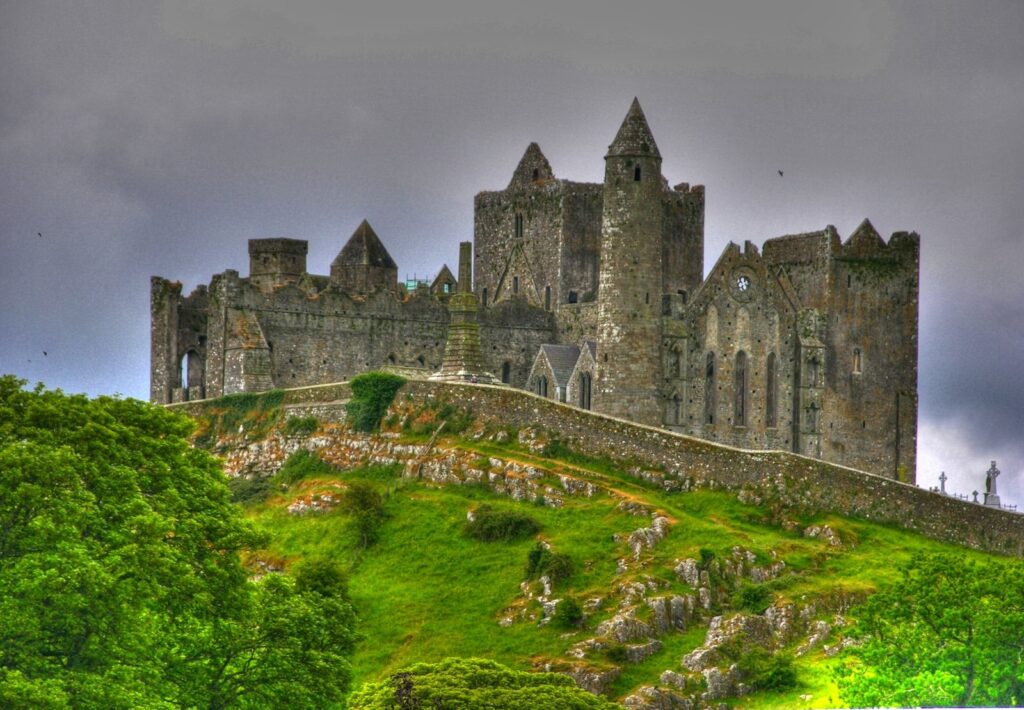Charleville Castle | Everything You Need to Know About Charleville Forest Castle
Charleville Castle: Everything You Need to Know About Charleville Forest Castle
Charleville Castle, situated in Tullamore, County Offaly, stands as a breathtaking example of Gothic Revival architecture set amidst the serene beauty of an ancient oak forest. A stunning example of Gothic Revival architecture, this castle is hauntingly beautiful. Originally constructed in the 18th century for the Earl of Charleville, the castle exudes an air of grandeur and mystery. It is also beautifully haunted.
After years of standing empty and neglected, Charleville Castle found new hope and purpose when the current owners undertook the monumental task of restoring it in 1973. With unwavering dedication and a deep sense of responsibility, they embarked on a journey to breathe new life into this historic landmark, preserving its architectural heritage for future generations to admire and enjoy.
The restoration of Charleville Forest Castle truly exemplifies a labor of love, marked by meticulous attention to detail and a profound reverence for the castle’s storied past. The restoration works are ongoing, and The Charleville Castle Heritage Trust now manages the property. Every aspect of the restoration process has been undertaken with the utmost care and respect for the castle’s rich history and craftsmanship, from painstakingly repairing damaged masonry to restoring ornate features and furnishings, every effort has been made to ensure that the castle retains its original splendor and.
The castle is open to the public for tours but as the place is run by volunteers that may not always be available, To ensure that you have the best experience possible and to avoid any potential disappointment, it’s recommended to call or email ahead to book. Tour availability may vary as volunteers manage the castle, and it’s always best to confirm arrangements in advance.
History of Charleville castle
The Château de Charleville, also known as Charleville Forest Castle, holds a fascinating history. Constructed in 1798 by the renowned architect Francis Johnston, the castle was commissioned by Charles William Bury, the Count of Charleville. This ambitious architectural project took over 14 years to complete, resulting in today’s magnificent Gothic Revival masterpiece.
The neo-Gothic masterpiece of Charleville Forest Castle, a testament to the vision and skill of architect Francis Johnston, captivates all who encounter it with its grandeur and architectural finesse. But the reward is immense: the neo-Gothic edifice immediately impresses the region with its impressive dimensions, but also with its great finesse, its exterior sculptures, its crenelated towers, and the castle stands as a striking example of Gothic Revival architecture, its medieval inspiration. every aspect of the castle exudes medieval inspiration and craftsmanship, transporting visitors to a bygone era of chivalry and romance.
The departure of Colonel Howard Bury in 1912 marked the end of an era for Charleville Forest Castle.
Restoration work on Charleville Forest Castle was organized in 1968, marking a significant turning point in the castle’s history. One of the key aspects of this restoration effort was the complete renovation of the castle’s roof—a crucial step in protecting the building from further deterioration and ensuring its long-term survival.
Visit Charleville castle
Today, the Château de Charleville is managed by Dudley Stewart, with day-to-day operations overseen by a dedicated team of volunteers.
Shows like Most Haunted Live, Ghost Hunters International, and Fox Scariest Places on Earth have all brought the castle’s reputed haunting to the forefront, attracting paranormal investigators from around the world.
Legend indeed tells of the haunting presence of a little girl named Harriet within the walls of Charleville Castle. Legend has it that the Charleville castle is haunted by a little girl called Harriet, daughter of the 3rd Count of Charleville. In a heartbreaking twist of fate, she slipped and fell, resulting in her untimely death. Since that tragic day, it is said that Harriet’s restless spirit has lingered within the castle, forever haunting its halls.
The Architect
Charleville Forest Castle stands as a magnificent testament to the Gothic Revival style, designed by the esteemed architect Francis Johnston. Johnston, a prominent figure in Irish architectural history, made significant contributions to numerous notable buildings throughout Ireland during the late 18th and early 19th centuries. Designed in the late 1700s by the architect Francis Johnston, the construction took 14 years and the castle was completed in 1812.
Indeed, Francis Johnston was a celebrated architect whose remarkable career spanned both neo-classical and neo-Gothic designs, leaving an indelible mark on Ireland’s architectural landscape.
Francis Johnston’s Chapel Royal in Dublin Castle stands as one of his most exquisite designs, representing a pinnacle of Gothic Revival architecture in Dublin, and is considered to be one of the finest examples of its type in Ireland. making it a standout example of Gothic Revival architecture in Ireland.
The Original Owners
Charleville Forest Castle was commissioned by Charles William Bury, who inherited his title and extensive land holdings at a remarkably young age—just six months old. This inheritance included vast estates in County Offaly, Ireland, where the castle was subsequently built. Thus, he embarked on the ambitious project of building Charleville Forest Castle amidst the tranquil beauty of his Offaly estates.
Charles William Bury’s inheritance of the title and vast estates, including the extensive oak forest and the town of Tullamore, came tragically after the drowning death of his father. Upon completing his education at Trinity College Dublin and graduating at the age of 21, Charles William Bury returned to Tullamore with a determination to make a positive impact on the town and its surrounding lands.
In 1912, a tragic incident occurred when a hot-air balloon crashed into the castle, resulting in a devastating fire that caused extensive damage to the structure. The fire engulfed parts of the castle, including its roof and upper floors, leaving behind charred ruins and destruction in its wake.
Charles William Bury, the 1st Earl of Charleville, and his wife Catherine Maria Bury envisioned Charleville Forest Castle as a splendid residence for their family, situated amidst the sprawling grounds of their Charleville Estate. The estate, which encompassed approximately 24,000 acres at its zenith, represented a vast and prosperous domain that played a significant role in the economic and social life of the surrounding region.
The King Oak Tree
The King Oak, standing proudly at the main entrance to Charleville Forest Castle Estate, is a magnificent testament to the ancient oak forests that surround the castle. At the main entrance to Charleville Forest Castle Estate stands a huge sprawling oak tree, known as the King Oak. This tree is part of a wider ancient oak forest that surrounds Charleville Forest Castle. This sprawling oak tree holds a special significance, serving as a symbol of the enduring beauty and resilience of nature. Ancient oak forests like those surrounding Charleville Forest Castle are often revered for their longevity, with some trees dating back hundreds, if not thousands, of years.
Some online reports say that the King Tree is 900 years old, but you can’t believe everything you read on the internet. While online reports may sometimes be unreliable, indeed, the King Oak at Charleville Forest Castle is often regarded as one of the oldest trees in Ireland. The Irish Wildlife Trust has described the King Oak as one of the oldest trees in the country, however, and it is believed to be between 400-800 years old. Its age and stature make it a source of fascination and admiration for visitors to Charleville Forest Castle Estate, who are drawn to its majestic presence and timeless beauty.
The belief in a spiritual connection between King Oak and the Bury family adds an intriguing layer of folklore and legend to the history of Charleville Forest Castle Estate. It has long been believed that the King Oak had a spiritual connection with the Bury family and that if one of the branches fell from the tree this foretold the death of a family member. rooted in a blend of myth, tradition, and cultural beliefs.
The story of the King Oak at Charleville Forest Castle Estate is indeed intertwined with tales of tragedy and resilience, adding to its mystique and allure. During a storm in 1963, the tree was almost split in half when it was struck by lightning. Some weeks later the owner of the estate, Colonel Charles Howard-Bury, passed away. He was 82 at the time of his passing, and died at Belvedere House in Co Westmeath, inherited from his father, having inherited Charleville Forest Castle from his mother. Colonel Howard-Bury’s connection to the estate, inherited from both his mother and father, underscores the deep familial ties and sense of legacy associated with Charleville Forest Castle and its surroundings.
The King Oak’s participation in the European Tree of the Year contest in 2013 was a significant moment that further cemented its status as a cherished natural landmark and emblematic symbol of Ireland’s rich heritage. of the Year contest after it was nominated as the Irish entry. It was beaten by a tree called ‘The Plane Tree in Eger’, located in Eger, Hungary, which took first place. Overall, King Oak’s participation in the European Tree of the Year contest in 2013 served to further elevate its profile and reinforce its status as an emblematic symbol of Ireland’s natural and cultural heritage. Nominated as the Irish entry in the contest, the King Oak captivated the imagination of people from around the world with its majestic beauty and storied history.
The Druids
The idea that the grounds of Charleville Forest Castle were once frequented by Druids adds a fascinating dimension to its history and mythology. The grounds on which Charleville Forest Castle now stands are thought to have once been frequented by Druids. The ancient oak forest that surrounds the castle does seem perfect for some Druidic magic. The high priests and priestesses of old are said to have worshipped their Gods and practiced their rituals here. Druids, the ancient Celtic religious leaders and scholars, were known for their profound connection to nature and their practice of rituals and ceremonies in sacred groves and natural settings.
The ancient Druids held a revered position in Celtic society, regarded as wise and learned individuals who served as religious leaders, scholars, and advisors. They were deeply attuned to the natural world and held a profound reverence for its mysteries and rhythms. It is thought by some that Druids would have presided over sacred rituals that may have included Human Sacrifice, but there is no evidence in Charleville forest of human sacrifice having taken place in its history. Revered for their longevity, strength, and symbolic importance, oaks were often associated with divine power and spiritual wisdom. The Druids of ancient Irish myths were intelligent and learned men and women who held more power than the kings, queens, and chieftains of the time.
The Interior Design
The entrance hall, with its impressive staircase and sparkling chandelier, sets the tone for the lavish decor that awaits within. The interior of Charleville Forest Castle is truly a sight to behold. The entrance hall leads to an impressive staircase with a sparkling chandelier hanging from a beautifully designed ceiling above. These intricate details speak to the craftsmanship and attention to detail that went into creating such a magnificent edifice. The decor inside the castle is all pointed arches and embellished ornamental plaster ceilings. The dining room was redecorated in the late 1860s by textile designer William Morris. His stenciled ceiling is still on display in this room. These features would imbue the interior spaces with a sense of grandeur and historical richness, transporting guests to a bygone era of opulence and sophistication.

Exploring The Rock of Cashel: History, Highlights, and Visitor Tips
the history of the Rock of Cashel is a rich tapestry that reflects the complexities of Ireland’s past, encompassing legend, conquest, faith, and culture over more than a millennium.

Red Bay Castle | Everything You Need to Know
Have you ever longed to immerse yourself in the blend of history and nature all at once, and relish every moment? Yeah, Red Bay Castle is the perfect place for that. The castle’s rugged beauty and ancient charm offer a unique opportunity to connect with Ireland’s rich heritage while surrounded by the breathtaking scenery of the coastline.

Exploring The Rock of Cashel: History, Highlights, and Visitor Tips
the history of the Rock of Cashel is a rich tapestry that reflects the complexities of Ireland’s past, encompassing legend, conquest, faith, and culture over more than a millennium.

Red Bay Castle | Everything You Need to Know
Have you ever longed to immerse yourself in the blend of history and nature all at once, and relish every moment? Yeah, Red Bay Castle is the perfect place for that. The castle’s rugged beauty and ancient charm offer a unique opportunity to connect with Ireland’s rich heritage while surrounded by the breathtaking scenery of the coastline.


3 Responses